 Your new post is loading...
 Your new post is loading...
Note: We’re expanding the topics we’re covering on AdEspresso. From now on you can expect us talking not only about Facebook ads but also discuss other topics you are hugely interested in.
The first of them is conversion rate optimization.
And to kick it off we decided to look at some traits of human behavior to see how they affect our buying choices and how to use this knowledge in improving conversions.
Like decision making, for instance.
Because, you know, turns out we’re not that great at making decisions after all....
Some 58% of consumers in the United States say they have shopped online while watching TV, according to a recent report from Blackhawk Engagement Solutions.
The report was based on data from an April 2015 survey of a nationally representative sample of 2,608 adults in the United States.
The most popular time for online shopping is between 4 PM and 9 PM, local time, with 48% of respondents saying that's when they do so. Some 37% of consumers admit to shopping online while at work; 18% say they do so often, and 19% say they do so sometimes.
In-Store Behavior - 40% of respondents say they use their smartphone camera to demo, share, and compare products they find in-store. - 19% have purchased a product from a competitor on their smartphone while being in-store. - 38% say Amazon.com is their first choice for comparing prices on their smartphone....
Technology isn't simply something that helps Young People get something done, i.e. make a purchase quickly and efficiently. Technology and interactive media play a role in identity formation and lifestyle. Online shopping doesn't do this for people. It's merely a convenience.
Yet a growing body of research indicates stores that fail to play an influential role within digital channels where young people pre-shop, socialize, and participate in virtual communities first, won't get the sale in the end.
Young People want to do more than consume; they want to co-create, participating in the emerging sharing economy. With the rise of the makers and locavore movements, and even seemingly niche trends like the resurgence of home-based and craft brewing, it's time retail environments built on active consumption....
Some might choose to tackle the Gen-Y demographic and wait on learning more about Gen Z, and others might just group these audiences together and figure they’re killing two marketing birds with one stone. But Deep Focus’ latest Cassandra Report, Gen Y and Gen Z want very different things from brands, and now that people who are a part of Gen Z are making independent purchasing decisions, that distinction is very important....
The reason that consumers may purchase your product or services really boils down to 4 different factors. These include cultural factors, social factors, psychological motivations and personal motivations. If you think hard enough, every purchase you have ever made has come from one or a combination of these factors. Now lets take a deeper look into each of these factors and how they may relate to inbound marketing....
The better we understand our customers, the better we become at conversion optimization. Although the digital age has given rise to new forms of marketing, it has not fundamentally changed human psychology.
Regardless of how digital marketing innovations change, we can still depend on the findings of psychology to support powerful conversion optimization techniques.
I want to explain how an understanding of your customer’s psychological curiosity can change how you approach your marketing initiatives. Prepare for some pleasant surprises and rude awakenings.
Customers are researchers. Satisfy their need for information....
What's important to understand about attribute framing is that it's entirely irrational and easily bleeds into stupid decision making.
Taking the soap example, consumers might favor soap sold as "95% Pure" over soap sold as "Only 1% Impure" even though the latter is the superior product. That's why advertisers and marketers can (and do) use attribute framing to create preference for inferior products.
So here's the kicker. The study unexpectedly revealed that male great apes were more susceptible to attribute framing than females. In other words, men are more likely than women to make an irrational (i.e. dumb) decision based upon attribute framing....
At a 1982 planning retreat, someone on the Mac team, “thought they should do some market research to see what customers wanted. ’No,’ [Jobs] replied, ‘because customers don’t know what they want until we’ve shown them.’”
Henry Ford famously stated “If I had asked people what they wanted, they would have said faster horses.”
I agree with the sentiment behind both these quotes. Asking consumers what they want is poor research and just plain lazy. Where I disagree is when people trot out quotes like this as justification for dismissing market research as a valuable tool in the innovation process. In reality, these quotes highlight two common pitfalls of poor market research in the world of innovation and growth strategy....
No spam. No stalking. No stress. Companies that deliver added value in their pitches or promotions for up- or cross-selling will become the customers’ friend. And only those brands have understood how to convert big data into smart data.
Still, the difference between big data and smart data needs to be properly understood by marketers. Big data relates to frequency and quantity, smart data more to loyalty and quality. Frequency programmes are simple exchange programs that aim for discount-seekers who love to collect points for their shopping trips. Clever loyalty programmes ask for smart data throughout the whole customer journey to offer products and services which cannot easily be copied by the competition....
The baby boom has happened again, and then some. The Boomers themselves, in the fullness of time, have given birth to an even bigger generation. Their offspring, the millennials (also known as Gen Y), are the young adults and teenagers born between 1980 and 2000 who are poised to transform a nation once more.
Specifically, and of most importance to those of you in business, they’re about to become the most important consumers–customers–in history. Their wallet power, already significant, is rapidly expanding, and will soon equal and then eclipse that of the Baby Boomers. In fact, it’s estimated that Millennials will be spending $200 billion annually by 2017 and $10 trillion over their lifetimes as consumers....
The tech world is abuzz with interesting possibilities for the Internet of Things (IoT) lately, but regular folks haven’t caught up yet. Why the enthusiasm gap? That’s the question that Affinnova, a Nielsen company, set out to answer in a recent study of nearly 4,000 consumers.
First, it’s worth noting that while people have great faith in technology to come, even early adopters have trouble articulating what they would want from smart products. While 57 percent of all consumers who responded to this study strongly agree that the IoT will be “just as revolutionary as the smartphone” for our culture, they can’t explain how or why. Furthermore, 92 percent say that it’s very difficult to pinpoint what they’d want from smart objects, but they’ll know it when they see it.
Given this blind spot, the study presented nearly 4,000 consumers with different “smart” product concepts, giving them the opportunity to choose which actual features and items they might be interested in.
With all the hype about the Internet of Things—new connected products intended to bring greater efficiencies and simplicity to life—it may be surprising how few consumers are actually adopting these new technologies.
"Despite predictions of rapid growth for smart products in the near future, the Internet of Things has yet to secure a foothold in the mainstream consumer market," notes a new exploratory case study by Affinova, which asked consumers to evaluate more than 4 million product concept variations and identify the most desired products and functions. The company said its research sheds light "on key consumer preferences and barriers to mainstream adoption of smart products."
One such barrier is a lack of understanding of what smart products are available and what their advantages and limitations are. While 57 percent of all consumers strongly agreed that the Internet of Things will be "just as revolutionary as the smartphone," they don't know how or why—92 percent told Affinova its very difficult to pinpoint what they want from smart objects, but feel that they'll know it when they see it....
While recovering from the holiday rush, retailers can look back at this season’s trends to discover new ways to fuel customer engagement and drive loyalty in the next year. Using real-time analytics, SAP uncovered a wealth of insights about consumers’ attitudes and desires that retailers can use all year long.
We have found that simply listening to what people are already saying provides powerful insights into their attitudes and behaviors. And consumers had plenty to say this holiday season: Shoppers shared their opinions and chronicled their actions with more than 28 million mentions online, an 8% increase over last year, according to SAP analytics.
Holiday shoppers tweeted more than 28 million mentions about their gift purchases- up 8% YoY via @SAP_Retail
Using social media analytics, we combed through the social chatter this holiday season to discover what consumers said – and what they actually did. We found some interesting trends, revealing consumers’ changing tactics and suggesting retailers must respond with different strategies of their own....
|
The press is replete with doubters. A prominent NPR host complained about whether or not he would be able to engage in the famous Oreo “twist, lick, and dunk” ritual.
ABC News even conducted a side-by-side comparison of the two cookies rating them on size, twistability (the thin ones broke 75% more often), dunkability (the thin ones took 18 seconds longer to get appropriately soaked), nutrition (the thin ones fared only slightly better), and taste (the regular ones had more of a nice chocolatey taste), with the original version clearly coming out on top.
On top of that, the new Oreo Thins—albeit the company doesn’t talk about it—comes with a 42% price premium over the regular “double-stuffed” Oreo cookies (i.e., a pack of Oreo Thins weighs 10.1 ounce and is priced at $5.49, a regular Oreo pack weighs 14.3 ounce and is priced at $5.49).
So would people buy the over-priced, under-stuffed new Oreo Thins? We think chances are that many people will; here’s why....
When it comes to your business website, your customers may not even register how specific colors of your product package, website elements, or overall site design are influencing them. That’s why it can be difficult to get accurate customer feedback on your color scheme.
But we can draw some general conclusions about colors and their psychological effects. For instance, green suggests wealth, while blue builds trust, which is one of the reasons why you’ll see a lot of blue-based headers on professional services websites (lawyers, etc.).
In previous research, men have also been found to shop online more often than women, so the results here shouldn't be too surprising. But as before, it’s not clear what that exactly means.
In an era when the lines between shopping online and in store are ever more blurred, it may behoove researchers to tease out exactly what "shopping" entails. Do men research products online without buying? Are they really buying more online than women? In the omnichannel/no-channel era, this would be useful to know.
This report does show how profoundly mobile has driven online shopping, and gives some clues about how to fashion mobile browsers vs apps....
New research from Accenture finds retailers must significantly enhance their mobile and in-store shopping experiences to match the way shoppers want to deal with retailers across multiple sales channels.
According to a survey of 750 U.S. consumers, 32 percent said the biggest improvement retailers need to make in the shopping experience is to enable the use of all three sales channels — physical store, online and mobile — in an integrated way. Yet a separate analysis of 32 major retailers found tablet and mobile phone users are able to start shopping on their devices and complete the cycle in-store with only 22 and 19 percent of retailers, respectively....
Ecommerce in The Netherlands is still growing. Last year, the online retail industry increased by 8.4% to reach 13.96 billion euros. During the last six months of 2014, the ecommerce industry even grew harder than it ever did for the last five years.
When we mix these percentages together, it shows that 17.6% of all purchases (products as well as services) in The Netherlands happens online. With regards to the consumer retail industry it seems that the share of products being sold online is about 7.6% (2013: 6.6%). The growth of consumer spending is mainly due to the growth of online spending, says Wijnand Jongen, director of branche association Thuiswinkel.org....
Generation Z represents the first generation of the 21st century, and is comprised of America’s youth–those aged 2 to 19. This diverse group is already making an impact with marketers, especially the sweet spot of tweens and teens aged 11-16.Here are three facts you need to know about Generation Z...
Sustained incremental growth in the consumer package goods (CPG) and retailing industries has never been more elusive. Consumer trends are leaning increasingly toward less processed, more health-conscious products. At the same time, traditional manufacturers and retailers are grappling with declining foot traffic and rapidly evolving e-commerce purchase options.
But some CPG and retail companies are working hard to stem the tide—putting the customer’s wants and needs first, so they can be smarter at anticipating the needs of today’s rapidly evolving tastes. Here are two recent examples of CPG companies and one retail enterprise that have successfully innovated by becoming customer-centric:...
Online shopping has become a multibillion-dollar revenue stream--not to mention it has completely turned the path to purchase on its head.
What retailer doesn't want a piece of that growing pie? This is where multichannel marketing comes into play. Any successful online marketing strategy, however, begins with understanding--and then catering to--consumers' various shopping patterns and preferences.
To start you on your way, here is a glimpse into the online purchase habits of the modern-day shopper.....
Consumers are shifting spending online, with 71% of surveyed consumers in UK and 61% in US, doing more than half their 2014 holiday shopping online, according to research by Wipro Digital.
This is a significant increase from 2013, when 45% in UK and 36% in US reported doing the majority of their shopping online.
This trend is set to continue with half of the surveyed consumers in US and UK saying that they plan to do more shopping, online in the 2015 holiday season, as compared to just 6% in UK and 4% in US who plan to increase their in-store shopping...
“IBM’s research found a few areas where retailers may have some interesting opportunities,” said Kali Klena, global retail industry leader for IBM’s Institute for Business Value, San Mateo, CA. “First, there is a growing gap between shoppers’ enjoyment of digital shopping — online and mobile — and their last purchase behavior.“
Said another way, some retailers are delivering more enjoyable digital shopping experiences than others,” she said. “This indicates an opportunity for retailers to look at their digital shopping offerings and be sure they are truly tailored by channel....
Last year, I wrote that the future of branding is human–and it still is, but in 2015 that 'human' attribute will become a part of every aspect of the brand
.In other words, we'll expect the same authenticity, transparency, acceptance and eye-to-eye understanding we get from person-to-person contact from the brands we choose. In a world of choice, today's consumers, especially the growing millennial and upcoming 'Z Generation' (born late 1990s-mid 2000s), are choosing the brands that best align with who they are, what they believe, and match their expectations. It isn't just about disruption anymore, it's about real-time relevance....
When was the last time you paid the full retail price? According to a recent article in The Wall Street Journal (Attention, ‘Discount Junkies’) about 15% of shoppers generally pay full price for items and don’t bother searching for sales. At the other extreme, a fifth of online shoppers are considered true “discount junkies,” people who make purchases only when offered discounts.
Discount shoppers are clearly reluctant to spend on premium brands if value is missing. In fact, in C. Britt Beemer and Robert L. Shook’s book “It Takes a Prophet to Make a Profit: 15 Trends that are Reshaping American Business” published back in January 2001, Trend 6 states:“Consumers Are Reluctant to Pay Full Retail Price”
Their research showed that more than 85 percent of all consumers in America shop for merchandise on sale. For those who pay full retail, 44 percent said they did so because they didn’t have time to shop. In addition, they discovered....
|



 Your new post is loading...
Your new post is loading...

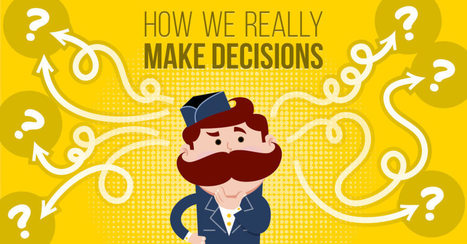




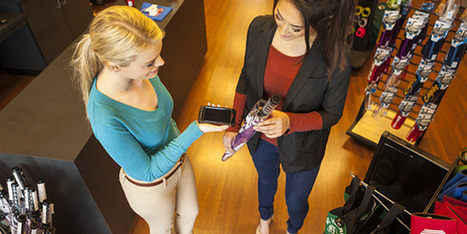







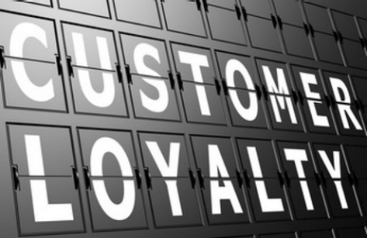






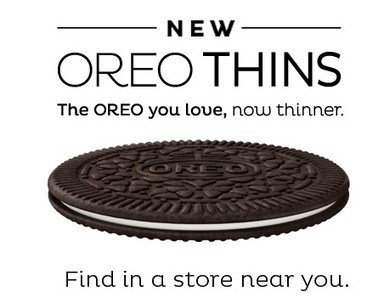










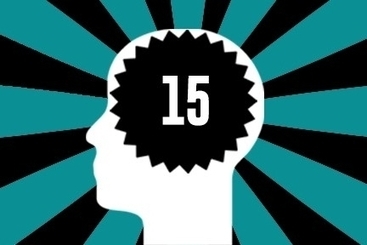











Ever wonder how we REALLY make decisions?